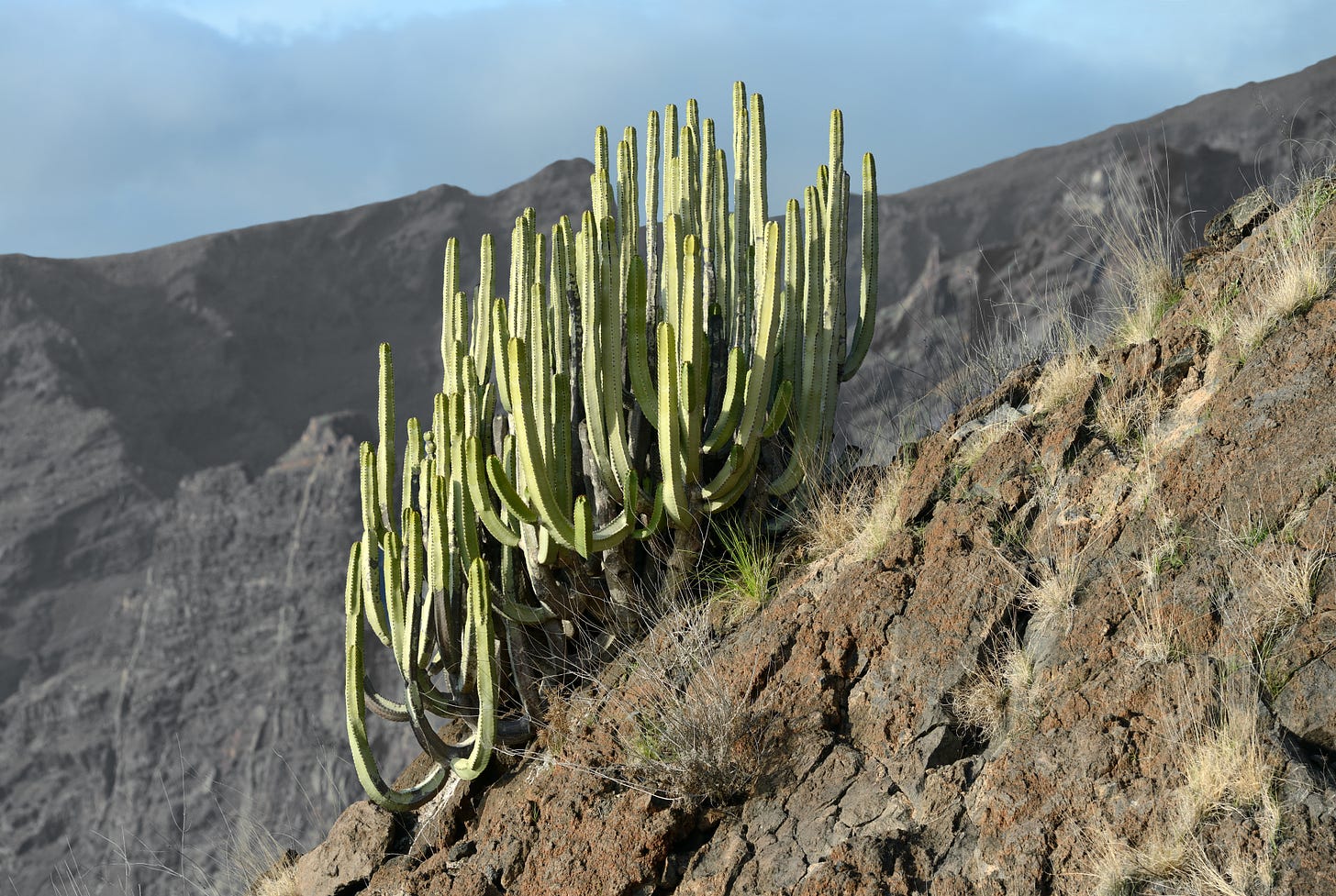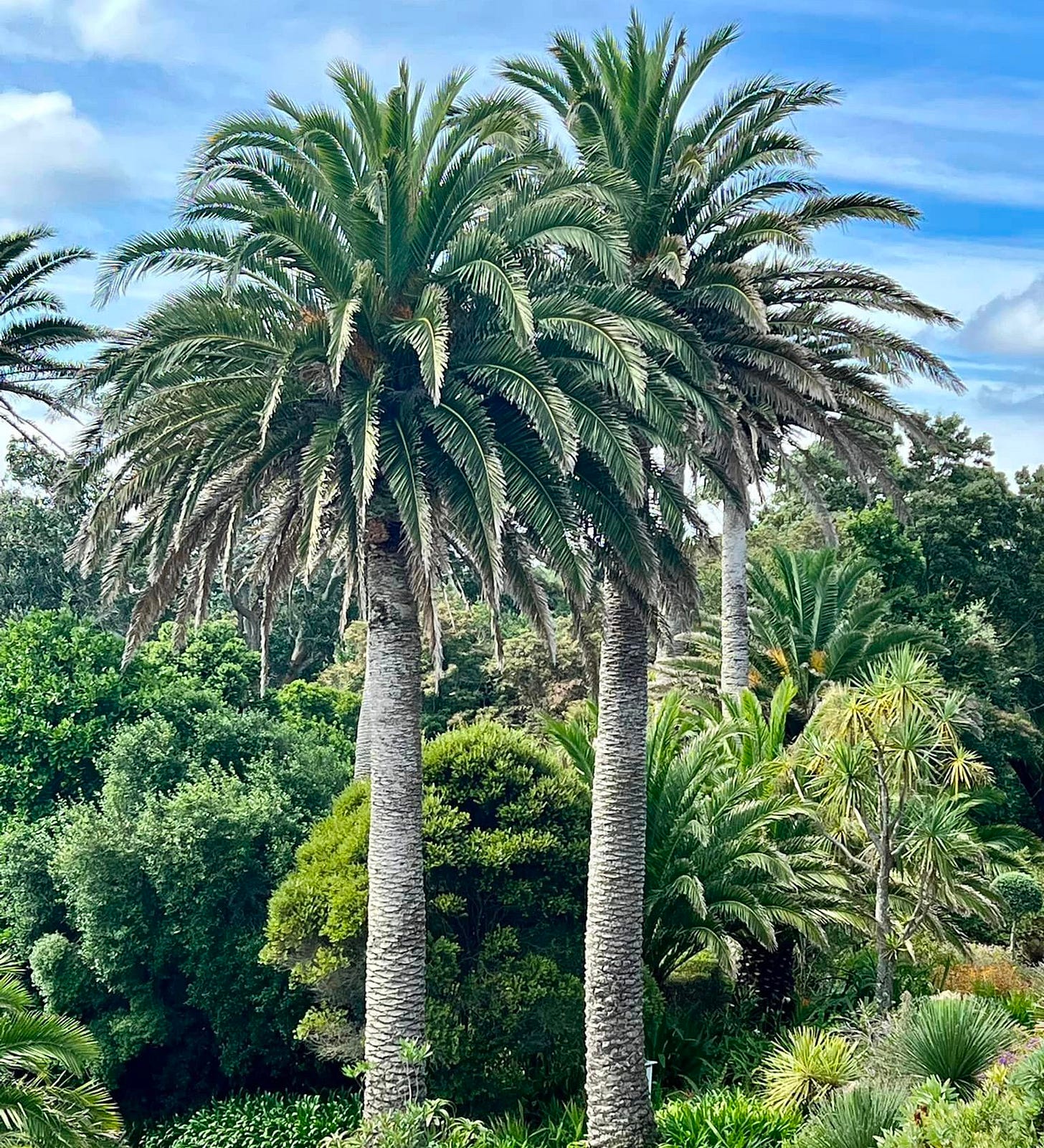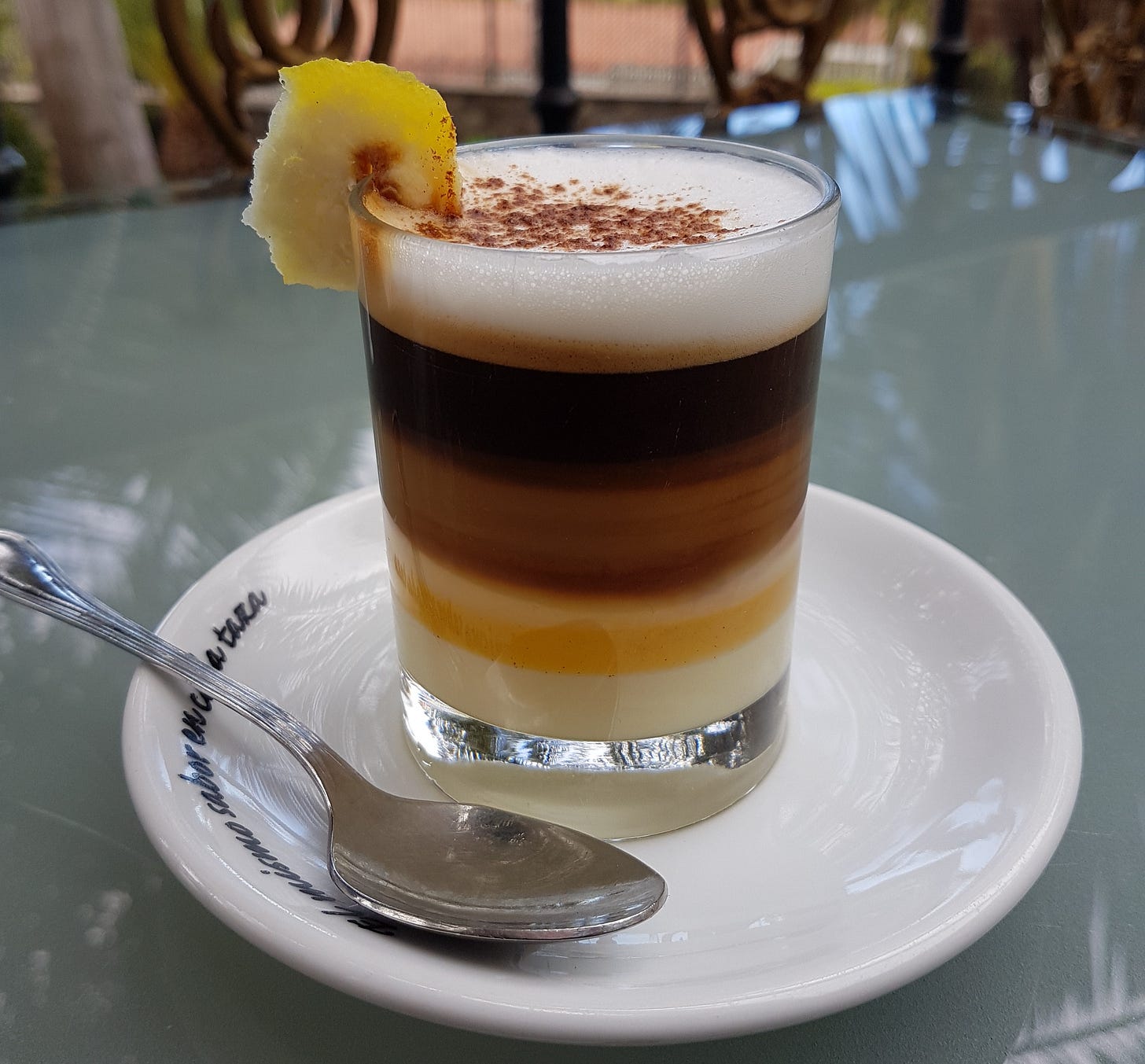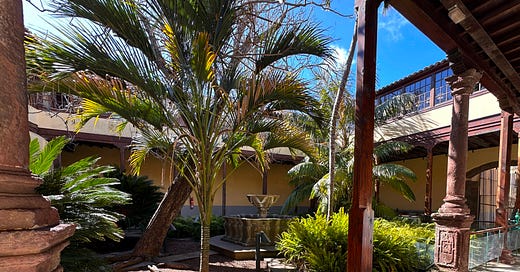Tenerife: Interesting Plants & the Barraquito
Notes from my summer travels and encounters of the botanical sort.
Hello dear readers, and greetings from Tenerife, Spain! Over the past week, I’ve been en route to Europe by ship with my mom, who is celebrating 50 years of service to our hometown school system—first as a special education teacher and later as a school psychologist. She’s set to retire next month and is looking forward to relaxing and spending more time on her emerging hobby of nature photography. Congrats, mom!!
When we originally booked this trip, I had no idea the world of science funding would be in such upheaval. As a result, I’ve unfortunately spent most of our days at sea writing grants and joining Zoom meetings. But this morning, after nine long days crossing the open ocean, we finally reached land: the stunning volcanic island of Tenerife, located off the coast of Morocco in the Canary Islands. I couldn’t resist a trip ashore!
While the old town of La Laguna boasts historic buildings with lovely inner open-air courtyards featuring palms and fountains, the surrounding hillsides are dotted with local plants like the beautiful, but toxic cactus look-alike of Eurphorbia canariensis, locally known as cardón. A member of the spurge (Euphorbiaceae) family, this is a succulent (not a cactus) and produces a latex filled with toxic diterpenes.

I really wish I had the time and permits to collect some samples for lab analysis. Euphorbia species are chemical powerhouses—what may be toxic in high doses can sometimes have therapeutic potential when delivered at the right dose and via the right route. For example, a related species in the same genus, Euphorbia peplus (which doesn’t resemble a cactus), is the source of ingenol mebutate (marketed as Picato). This diterpene, isolated from the plant’s sap, has been developed into a pharmaceutical drug approved by both the FDA and the European Medicines Agency for the treatment of actinic keratosis—a precancerous skin condition caused by UV radiation.
And then there are the Canary Island date palms (Phoenix canariensis in the Arecaceae, or palm family). While related to the true date palm (Phoenix dactylifera), the Canary date palms aren’t cultivated for their fruit from what I could glean from the local guides. Instead, the tree sap is made into a syrup. These palms, while considered a symbol of the Canary islands, have also made be used extensively in landscaping in California and Florida due to their aesthetic value.

The highlight of our day ashore though was tasting a coffee preparation unique to Tenerife: the Barraquito. Imagine something like a warm espresso martini served in a tall shot glass—but that comparison doesn’t quite do it justice. The Barraquito is far more flavorful and complex, and it’s enjoyed by locals and tourists alike throughout the day alongside classic espressos in the island’s standing-room-only cafés.

While the Barraquito is a specialty of Tenerife, you can definitely try recreating this beautiful, multi-layered drink at home—with or without alcohol. It starts with an espresso cortado (equal parts espresso and steamed milk), layered with sweetened condensed milk, a shot of the citrusy Spanish liqueur Licor 43, and topped with milk foam, a sprinkle of cinnamon, and a twist of lemon peel. The key is to pour each element slowly to create the distinct layers, just like the one pictured above. Food & Wine magazine has a great article on the Barraquito if you’re curious to learn more. It was an absolute treat and one I’ll definitely be trying to recreate once I’m back home.
Give it a try! Let me know what you think of it in the comments below.
Yours in health, Dr. Quave
Cassandra L. Quave, Ph.D. is a Guggenheim Fellow, CNN Champion for Change, Fellow of the National Academy of Inventors, recipient of The National Academies Award for Excellence in Science Communication, and award-winning author of The Plant Hunter. Her day job is as professor and herbarium director at Emory University School of Medicine, where she leads a group of research scientists studying medicinal plants to find new life-saving drugs from nature. She hosts the Foodie Pharmacology podcast and writes the Nature’s Pharmacy newsletter to share the science behind natural medicines. To support her effort, consider a paid or founding subscription to Nature’s Pharmacy or donation to her lab research.
The Plant Hunter is available in hardcover, paperback, audio, and e-book formats!









Your travels sound fun and delightfully enlightening. Congrats to your Mom, and gratitude for her years of service!
Sounds like a great place to visit. Hopefully you can return with collection permits in hand! Can't wait to see your mom's photos! Congrats to her! :-)